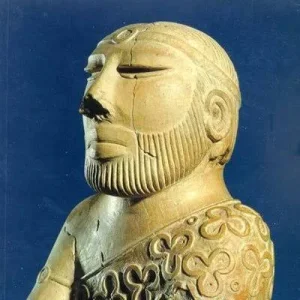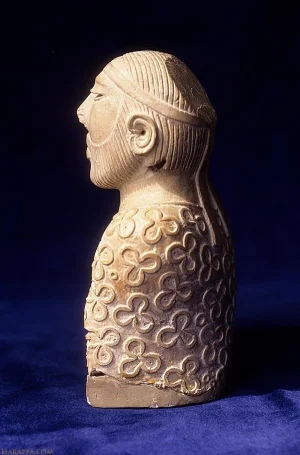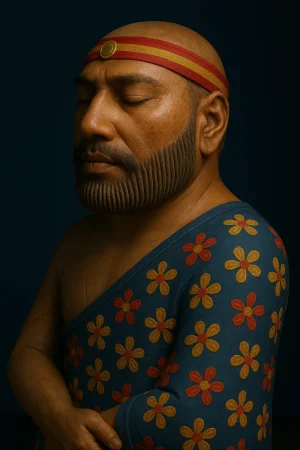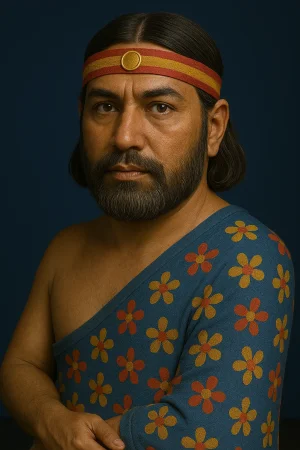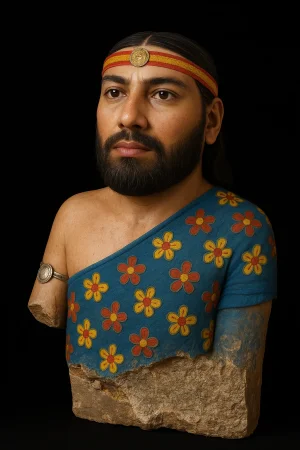lately i am using grok to summarise history content from old books.
idea is that most history books are written in large paragraphs, trying to find a better presentation methods of same info in contemporary writing styles which corporate/techie wallahs can understand.
the one below is on a chapter of bows and arrows from a book ancient Indian warfare.
@Azaad had shared the book with me a some time ago.
======
The text provides a detailed examination of archery in ancient India, particularly focusing on the bow (dhanus) and arrow (isu) as described in early Hindu texts like the
Dhanur Veda,
Nitiprakasika,
Agni Purana, and various Brahmanas. Below is a concise summary and analysis of the key points regarding the classification, characteristics, and use of bows and arrows in ancient Indian warfare:
Classification of Weapons
- Dhanur Veda: Classifies weapons into four categories:
- Mukta: Weapons that are thrown (e.g., arrows).
- Amukta: Weapons not thrown (e.g., swords).
- Mukta-mukta: Weapons that can be thrown or not (e.g., spears).
- Yantramukta: Weapons discharged by mechanisms (e.g., catapults).
- Bows and arrows are primary weapons in the mukta category.
- Nitiprakasika: Divides weapons into three classes:
- Mukta: Thrown weapons (e.g., arrows).
- Amukta: Non-thrown weapons.
- Mantramukta: Weapons discharged by mantras (likely symbolic or ritualistic).
- Lists twelve types of mukta weapons, with the bow being prominent.
Characteristics of Bows
- Terminology: Bows were known as sanga, kodanda, karmuka, or dhanus. It’s unclear if these were synonyms or distinct types.
- Materials:
- Rod: Made of steel, horn (buffalo, rhinoceros, or mythical sarabha), or wood (sandal, sala, cane, bamboo). Bamboo bows, like Arjuna’s Gandiva, were considered the best.
- Strings: Made from munja grass, arka plant, hemp, bamboo fiber, or sinew.
- Grip: Wrapped with thick material for stability and ease of use.
- Dimensions:
- Wooden bows: ~6 feet (4 cubits); middling/inferior bows: ~5 feet.
- Steel bows: Smaller grip, often inlaid with gold, resembling a "lady’s eyebrow."
- Sivavyasa Dhanur Veda: Bow length as 4 x 24 inches.
- Types (Kautalya’s classification):
- Karmuka: Palmyra.
- Kodanda: Bamboo.
- Druna: Damwood.
- Dhanus: Bone or horn.
- Weight (Kodanda Mandana):
- Yogin’s bow: 2 palas.
- Practice bow: 300 palas.
- Reed bow: 400 palas.
- Battle bow: 700 palas.
- Long-distance bow: 950–1,000 palas.
- Design: Bent at three places, with a tusk-like opening; two strings used for redundancy.
Characteristics of Arrows
- Materials:
- Shaft: Iron or bamboo (well-grained, golden-colored).
- Head: Iron (cutting), bone (rending), or wood (piercing).
- Feathers: At the tail for stability.
- Gold-tipped points for some arrows.
- Dimensions (Agni Purana):
- Superior: 12 mustis (~1 musti = 1 pala).
- Middling: 11 mustis.
- Inferior: 10 mustis.
- Types (Kautalya):
- Venu, sara, salaka, dandasara, naraca (metal arrow, five-sided, five-feathered).
- Proficiency: An archer was proficient if they could pierce metal plates (half-finger thick) or 24 layers of leather.
Use of Bows and Arrows
- Technique (Agni Purana):
- Bow held with the left hand, arrow with the right.
- Arrow’s feathered end rests on the string, drawn to the ear in a straight line.
- Archer’s stance: Triangular or specific positions like Samapada (standing), Vaisakha (tiptoe), Mandala (circular), Alidha (right thigh steady), Pratyalidha (reverse), and others.
- Equipment:
- Defensive leather armor on the left hand.
- Quiver hung from the neck.
- Movements: Nitiprakasika lists 14 distinct movements for archery practice.
- Cultural Significance:
- Named Dhanur Veda, emphasizing the centrality of archery in warfare.
- Used by all four warrior classes, unlike some weapons restricted by caste.
- Literary references (e.g., Raghuvamsa, Sakuntalam) highlight archery skills of figures like Rama and Dusyanta.
Historical Context
- Early Texts:
- Rig Veda: Mentions isukrt and isukara (arrow-makers), indicating a specialized profession.
- Aitareya Brahmana (~600 BCE): Describes gods crafting an arrow with symbolic components (Agni as point, Soma as socket, Vishnu as shaft, Varuna as feathers).
- Kausitaki Brahmana: Lists a bow with three arrows as a sacrificial fee, symbolizing safe journeys.
- Mythological References:
- Indra’s thunderbolt (vajra) splitting into parts, including the sara (arrow), as per Satapatha Brahmana.
- Arjuna’s Gandiva and Krishna’s horn bow as iconic weapons.
- Comparative Perspective:
- Indian bows were drawn to the ear, unlike Greek bows (drawn to the chest).
- Indian arrows (~3 cubits) were longer than Greek javelins, with superior penetration (per Arrian).
- Greek bows (made of wool, horn, horse-hair) were less effective in winter, unlike Indian bamboo/steel bows.
- Archaeological Note:
- Mohenjodaro and Harappa finds (Chalcolithic period) show copper arrowheads but no stone ones, suggesting limited use of archery compared to other weapons.
Types of Archer Stances in Ancient Indian Archery
The
Agni Purana and related texts describe several stances (
sthana) used by archers to ensure accuracy, stability, and effectiveness when shooting a bow and arrow. These stances were part of the
Dhanur Veda, the ancient Indian science of archery, and were tailored to different combat scenarios and physical demands. Below is a detailed list of the stances, their characteristics, and their applications.
1. Samapada (Standing Position)
- Description: The archer stands with legs, calves, palms, and thumbs closely aligned, forming a compact and stable posture.
- Characteristics:
- Feet are close together, minimizing the base for maximum balance.
- Body is upright, with hands and thumbs positioned to draw the bowstring steadily.
- Use:
- Ideal for stationary shooting, where precision is prioritized over mobility.
- Suitable for calm, controlled environments, such as target practice or ritualistic archery.
- Significance: Provides a firm foundation, reducing body sway and enhancing focus on aiming.
2. Vaisakha (Tiptoe Position)
- Description: The archer stands on tiptoe, with thighs fixed and a small space between the feet on the ground.
- Characteristics:
- Elevated stance on toes increases alertness and readiness.
- Thighs are tensed to maintain stability, with feet slightly apart for balance.
- Use:
- Used in dynamic situations requiring quick movement or adjustment, such as battlefield scenarios.
- Allows for rapid pivoting or stepping while maintaining an elevated line of sight.
- Significance: Enhances agility, making it suitable for archers needing to respond to moving targets or threats.
3. Mandala (Circular or Semi-Circular Position)
- Description: The archer adopts a circular or semi-circular posture, with more space between the feet than in Samapada.
- Characteristics:
- Feet are spread wider, forming a broader base, often in a curved or rounded stance.
- Body may be slightly rotated to align with the target.
- Use:
- Effective for shooting in multiple directions without repositioning, such as in defensive formations.
- Useful in uneven terrain or when surrounded by potential targets.
- Significance: Offers versatility and a wider range of motion, ideal for complex combat scenarios.
4. Alidha (Right Thigh Steady)
- Description: The right thigh and knee are kept steady, while the left leg is drawn back.
- Characteristics:
- Weight is primarily on the right leg, which is firmly planted.
- Left leg is retracted, creating a forward-leaning posture that aligns the body toward the target.
- Use:
- Preferred for shooting at forward targets, especially in offensive maneuvers.
- Allows the archer to lean into the shot, increasing draw strength and arrow velocity.
- Significance: Emphasizes power and forward momentum, suitable for long-range or high-impact shots.
5. Pratyalidha (Reverse of Alidha)
- Description: The reverse of Alidha, where the left thigh and knee are steady, and the right leg is drawn back.
- Characteristics:
- Weight shifts to the left leg, with the right leg pulled back.
- Body leans slightly to the left, aligning with targets to the right or at an angle.
- Use:
- Used when targeting objects to the right or in situations requiring a mirrored stance.
- Facilitates shooting while retreating or adjusting to lateral threats.
- Significance: Provides flexibility for archers in defensive or multi-directional combat.
6. Sthanam (Balanced Position)
- Description: The left knee is held straight, while the right knee is bent, creating a balanced yet flexible posture.
- Characteristics:
- Left leg is extended for stability, while the right leg’s bend allows for quick movement.
- Body remains upright, with weight distributed to adapt to sudden changes.
- Use:
- Suitable for prolonged shooting sessions, as it reduces fatigue.
- Allows for quick transitions between aiming and moving.
- Significance: Combines stability and mobility, making it versatile for both static and dynamic contexts.
7. Niscala (Fixed Knee Position)
- Description: The left knee is held straight and rigid, with the right knee bent, focusing on a fixed lower body.
- Characteristics:
- Left leg is locked for maximum stability, anchoring the archer.
- Right knee’s bend allows slight adjustments in upper body alignment.
- Use:
- Ideal for precision shooting, especially at distant or small targets.
- Used in situations requiring minimal movement, such as ambushes or sieges.
- Significance: Prioritizes accuracy over mobility, ensuring a steady platform for the bow.
8. Vikata (Straight Right Leg)
- Description: The right leg is placed straight, with the left leg possibly bent or adjusted for balance.
- Characteristics:
- Right leg is extended fully, creating a strong, linear base.
- Left leg’s position varies, allowing adaptability in posture.
- Use:
- Used for powerful shots requiring a firm lower body.
- Suitable for archers facing a single, forward-facing target.
- Significance: Emphasizes strength and directness, aligning the body for maximum force.
9. Samputa (Raised and Bent Knees)
- Description: Both legs are raised, with knees bent, creating a crouched or semi-squatting posture.
- Characteristics:
- Both knees are flexed, lowering the archer’s center of gravity.
- Feet remain close, with weight distributed evenly.
- Use:
- Used in defensive scenarios, such as shooting from cover or low positions.
- Allows for quick drops or rises, evading enemy projectiles.
- Significance: Enhances stealth and protection, ideal for guerrilla-style tactics.
10. Svastika (Stretched Legs with Protruding Feet)
- Description: Both legs are stretched straight, with feet protruding outward, resembling a swastika shape.
- Characteristics:
- Legs are fully extended, with feet angled outward for a wide base.
- Body remains balanced, with arms free to draw the bow.
- Use:
- Used in open terrain for stability against wind or uneven ground.
- Allows for broad, sweeping shots across a wide arc.
- Significance: Provides a unique, stable base for shooting in challenging environments.
Additional Notes
- Triangular Position: The text mentions a "triangular" stance as the primary aiming position, likely referring to the body’s alignment (feet forming a triangle with the target). This could be a variation of Alidha or Pratyalidha, emphasizing a forward-leaning, focused posture.
- Technique Integration:
- The archer holds the bow with the left hand and the arrow with the right, drawing the string to the ear.
- Defensive leather armor on the left hand and a neck-hung quiver complement these stances.
- The Nitiprakasika lists 14 movements associated with archery, likely including transitions between these stances.
- Cultural Context: These stances reflect the Dhanur Veda’s emphasis on precision, adaptability, and discipline, tailored to both ritualistic and battlefield archery.
Significance in Warfare
- Versatility: The variety of stances allowed archers to adapt to different terrains, combat scenarios, and target distances.
- Training: Mastery of these stances required extensive practice, indicating a professional or warrior class skilled in archery.
- Cultural Reverence: The detailed codification in texts like the Agni Purana underscores archery’s centrality in ancient Indian military and cultural life.
Cultural and Military Significance
- Archery was a highly developed science, supported by the state (e.g., Jataka story of Prince Peerless).
- Bows were versatile, used by foot soldiers, cavalry, and even hill tribes (e.g., Khasias, Nagas).
- Hindu archery was renowned for precision and power, with Wilson noting their skill on horseback, akin to Parthian archers.
Conclusion
The bow and arrow were the cornerstone of ancient Indian warfare, as evidenced by their prominence in
Dhanur Veda and other texts. Their sophisticated design, varied materials, and detailed techniques reflect a mature military tradition. Unlike in Greece, where archery waned due to range limitations, Indian archery remained central, supported by cultural reverence and technical innovation.
